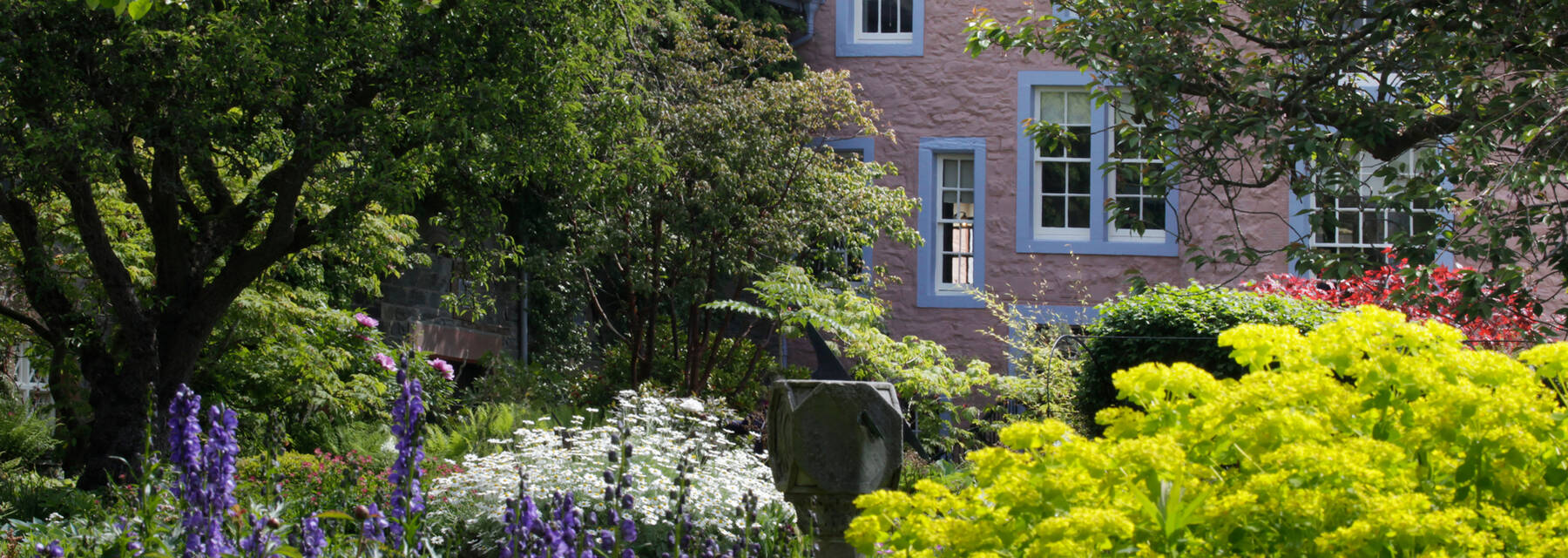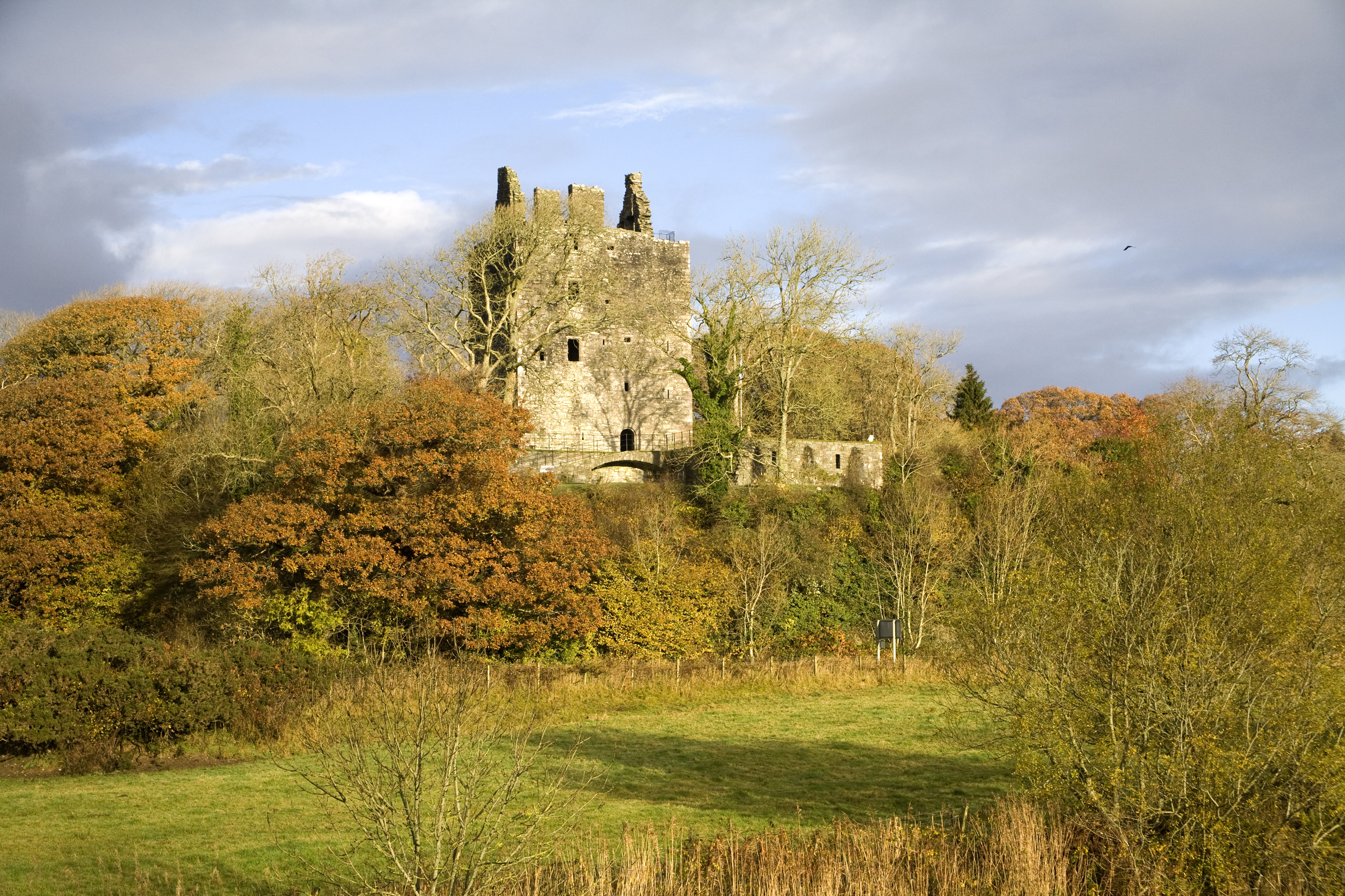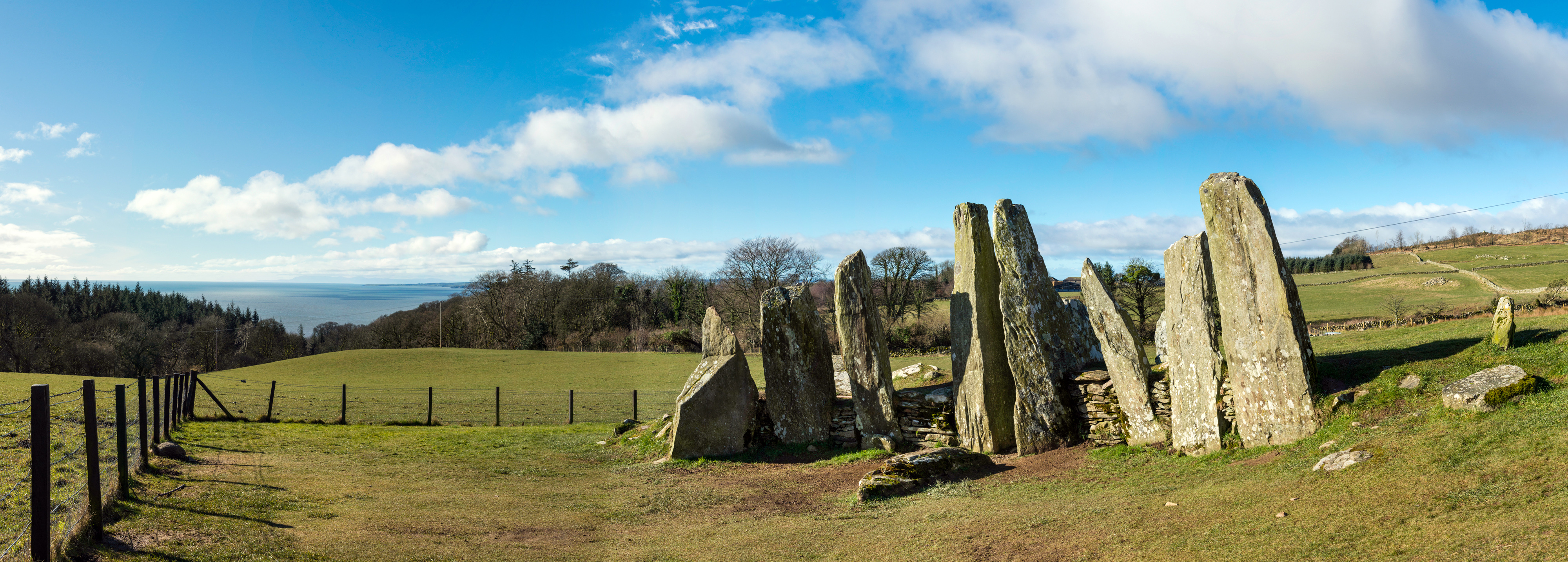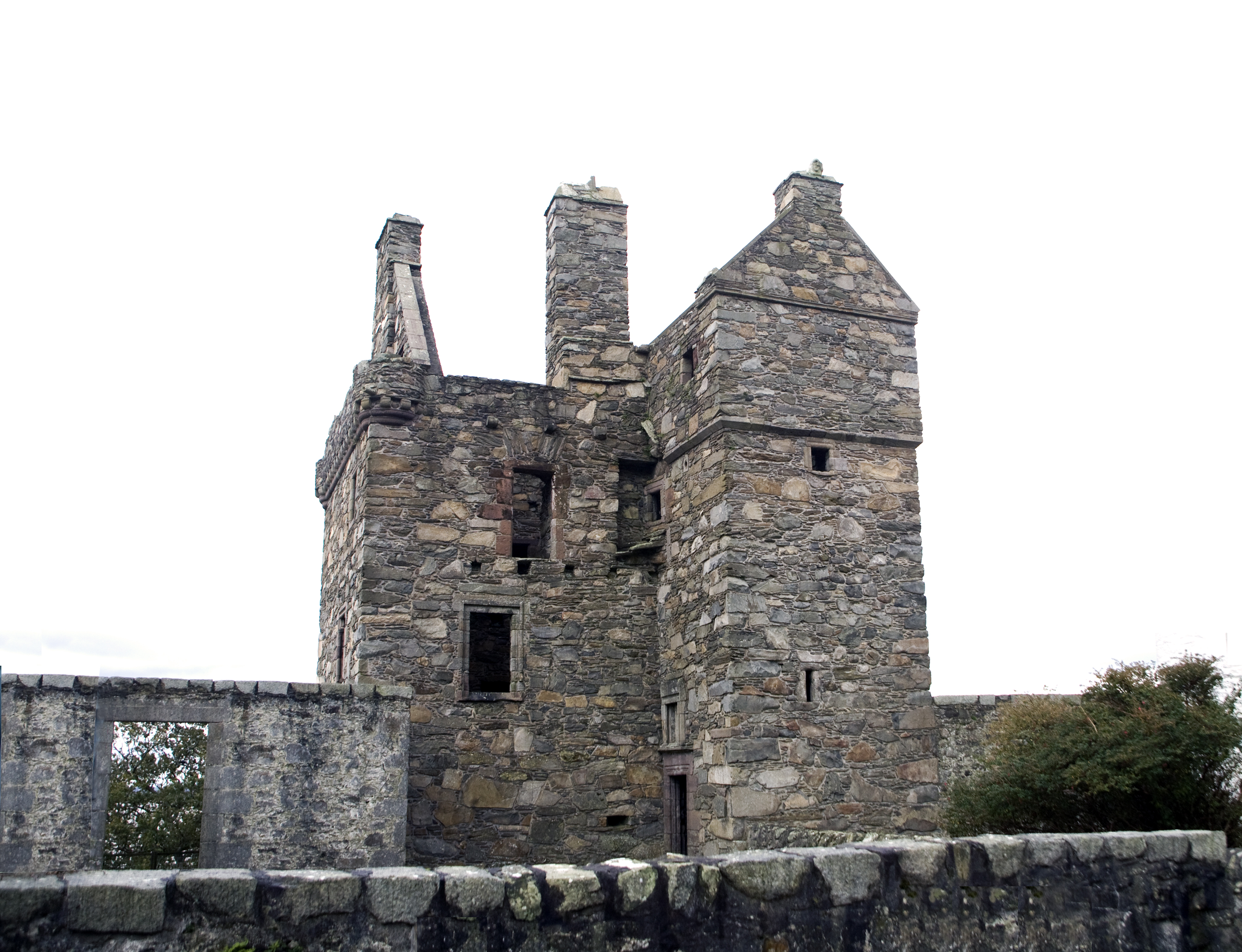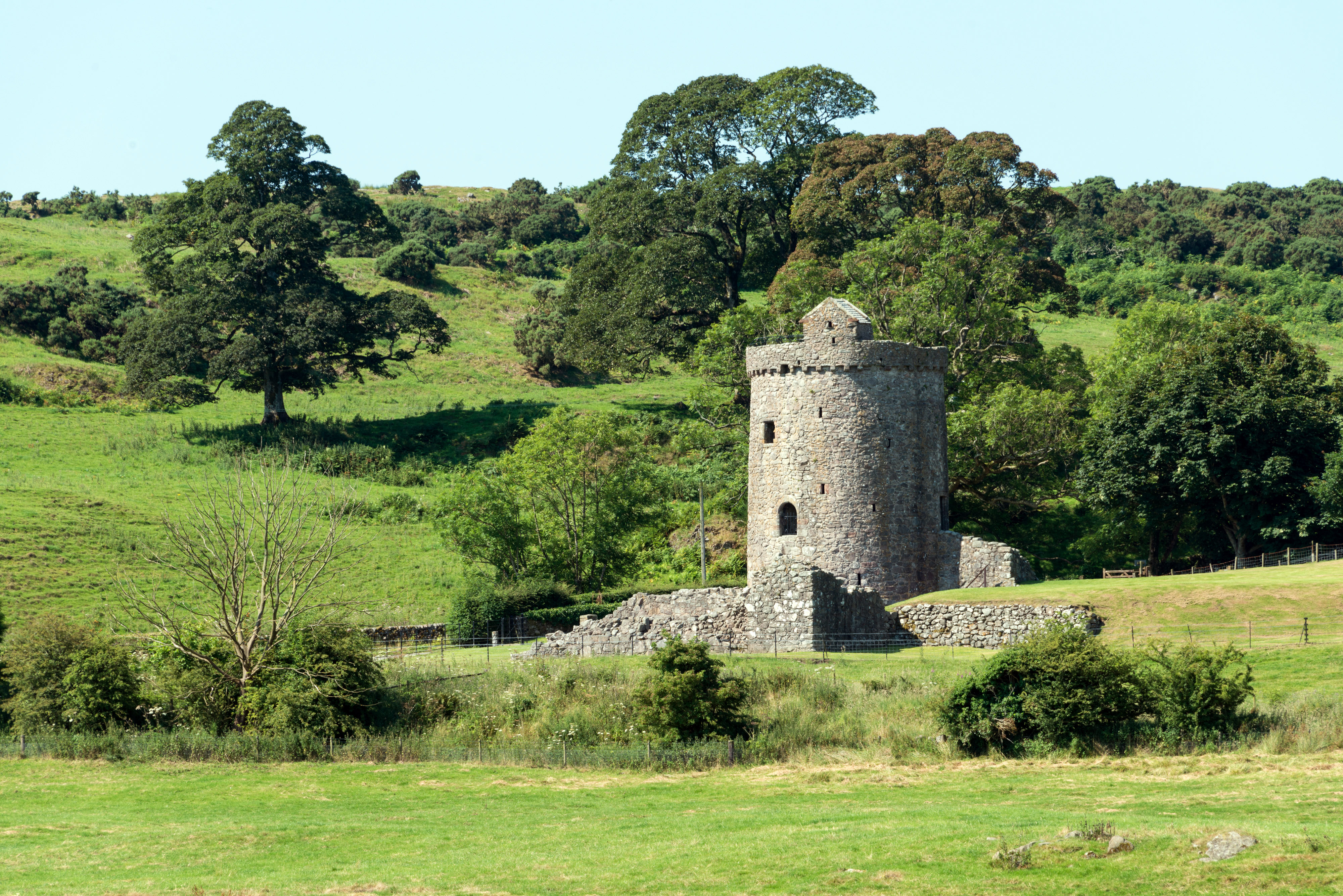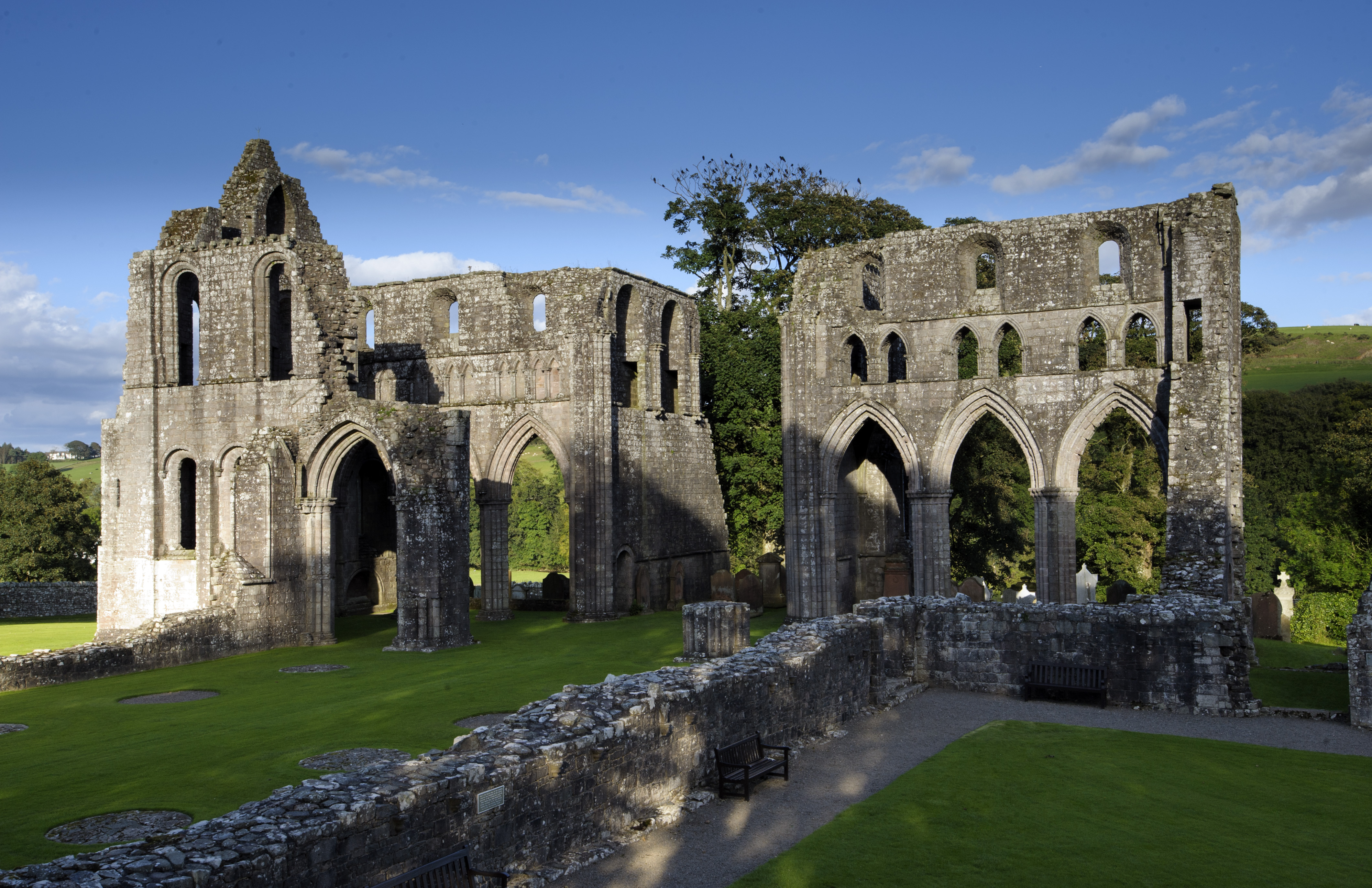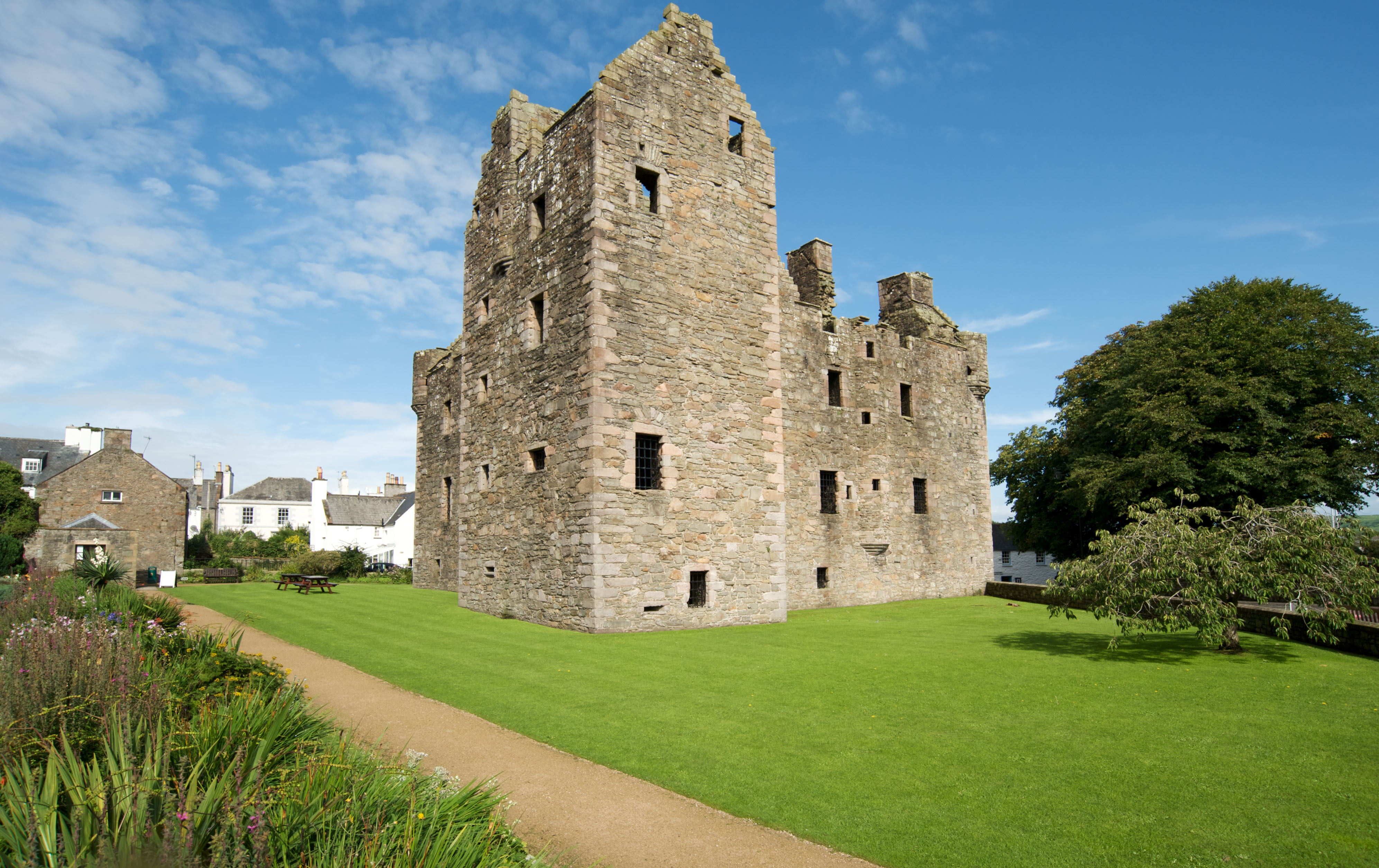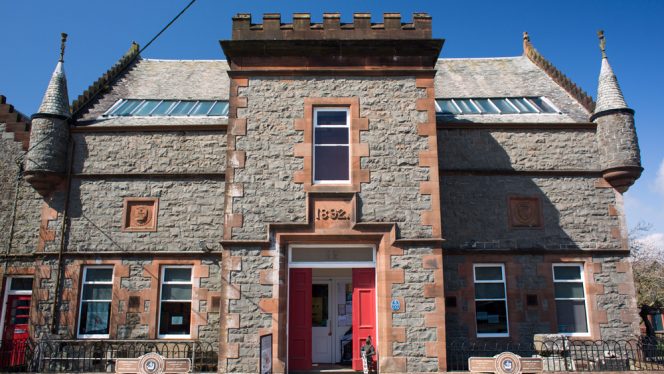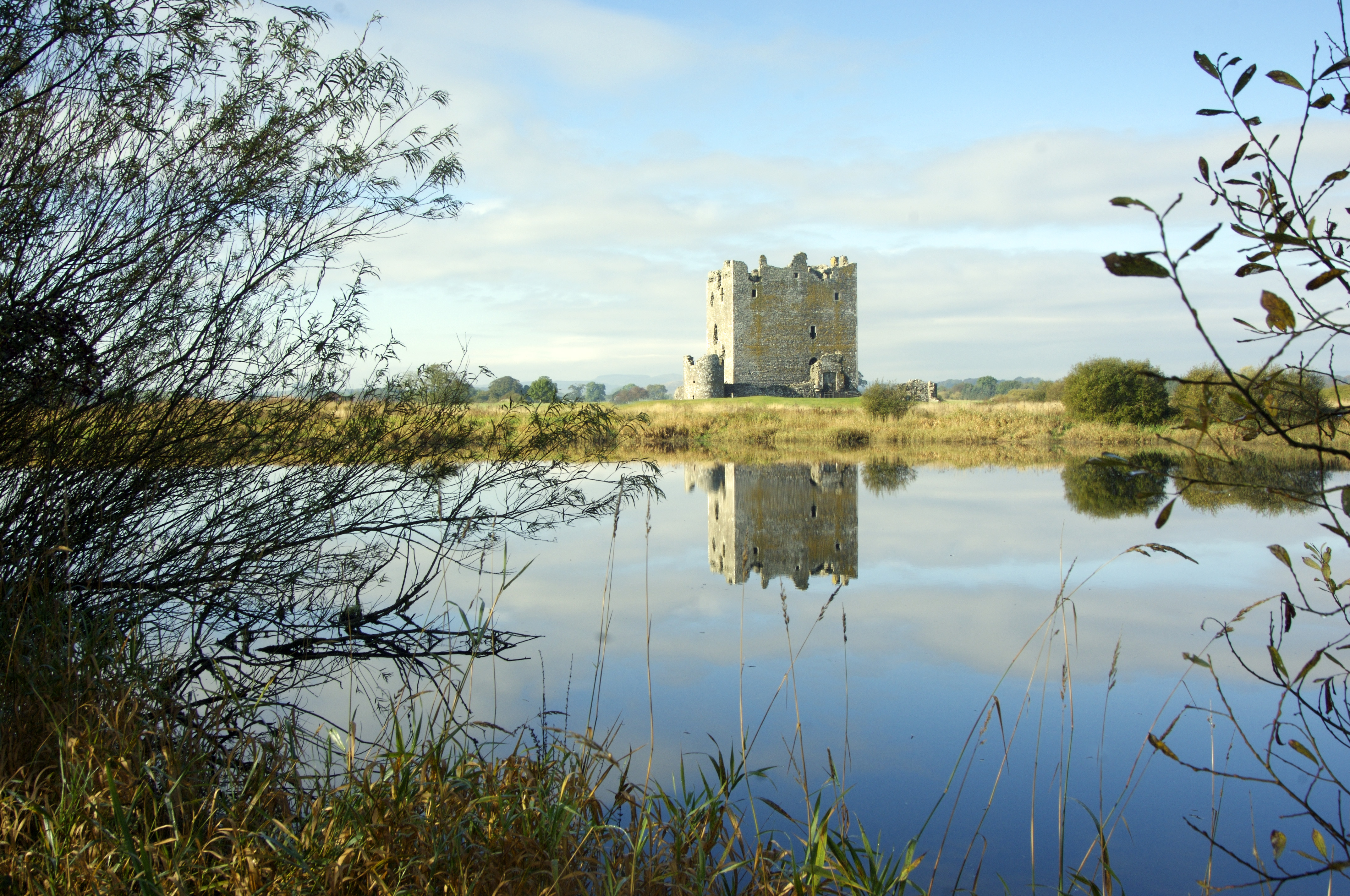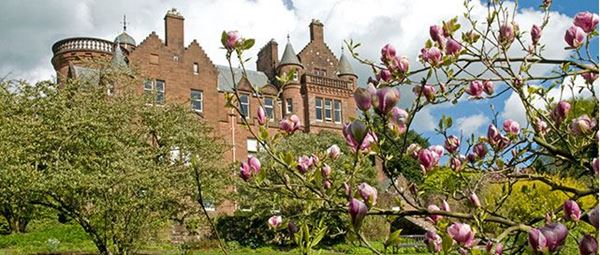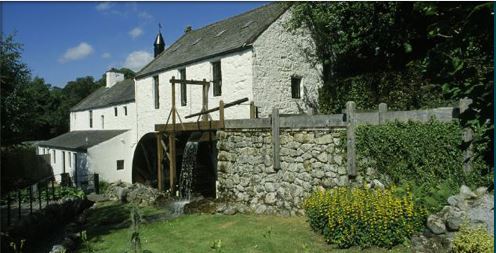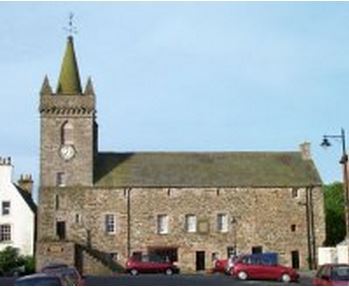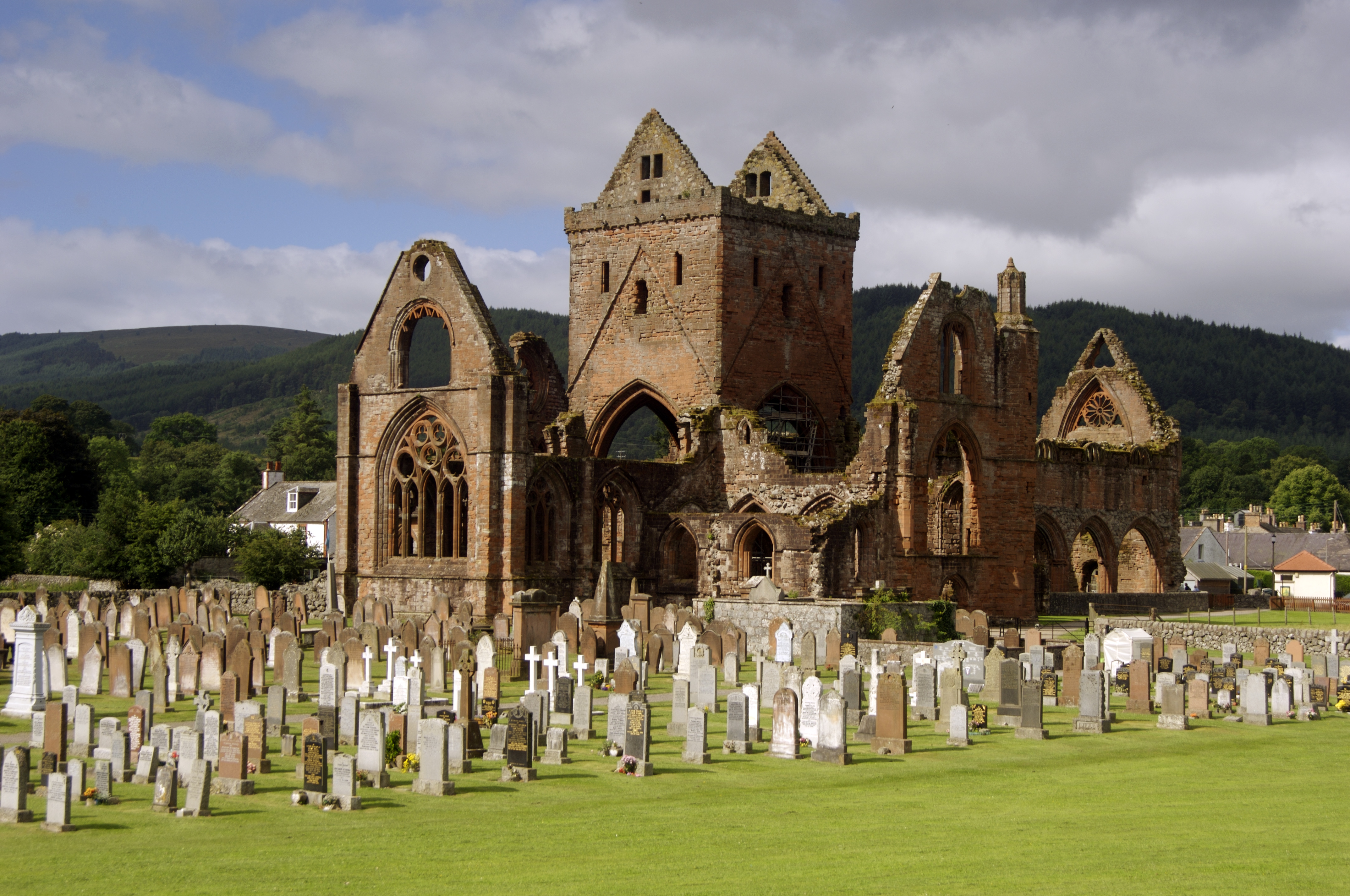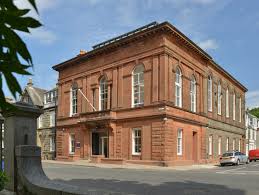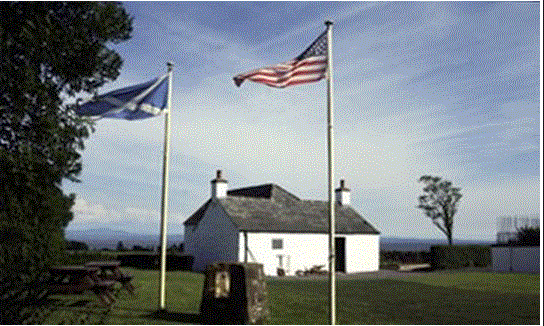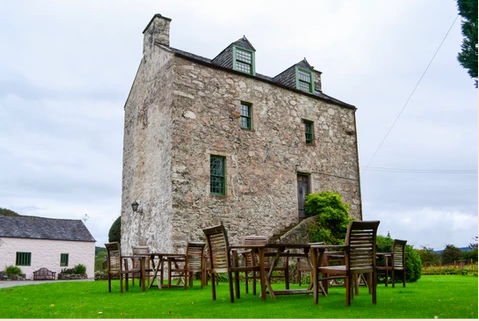Welcome to our site. The owner has his own business supporting Third Sector Organisations and writes and produces his own music
We're carrying on spreading the good word about our wonderful area - RESPECT - PROTECT - ENJOY
Some of the pictures you're seeing are from other parts of Scotland
Dalbeattie monuments, castles, museums, places to visit
Where provided maps are only a guide. Scroll down to see all the businesses on this page
Broughton House and Garden Edwardian home and studio of Scottish artist E A Hornel
Broughton House & Garden stands in the heart of Kirkcudbright, a historic town and artists’ colony on the Galloway coast. This impressive museum, combining both original interiors and exhibition spaces, is dedicated to E A Hornel’s life and work as an artist, collector and antiquarian. Hornel – one of the early 20th-century ‘Glasgow Boys’ – bought this impressive building in 1901 and transformed it into his studio and salesroom as well as his home. Hornel was a colourist with an eye for sensual detail – many of his works hang in the house alongside those of his contemporaries. He was also an avid collector: his vast library and archive – regularly used by visiting scholars – includes one of the world’s largest collections of works by Robert Burns as well as rare documents on Galloway’s rich history. His gallery, constructed in 1910, with its ornate fireplace and Parthenon frieze (inspired by the Elgin Marbles), is one of the finest rooms in south-west Scotland. Outside, Hornel and his sister designed a beautiful garden, with sweeping views over Kirkcudbright harbour and the River Dee. This mature garden is now a gentle labyrinth of stepping stones, wisteria-covered paths and Edwardian charm.
Cardoness Castle Lawlessness of the McCullochs
Learn about the lawlessness of the McCullochs, for whom this six-storey tower house was built. Godfrey was executed for killing John Gordon, to whom the castle passed when the McCullochs lost their money. What to see and do Admire the elegant tower house – a well-preserved example of a 15th-century Scottish nobleman’s residence Spot fine features in the hall in the tower, from the splendid fireplace to a wall cupboard for the family silverware Shudder at the horror of the pit prison – one of the best surviving in a Scottish tower house castle Climb up to the battlements and be rewarded with views over the Water of Fleet to the Solway Firth beyond
Cairn Holy Chambered Cairns
Wander the lonely resting place of a mythical Scottish king at this pair of Neolithic burial monuments. The two cairns of Cairn Holy are an impressive survival, particularly Cairnholy I with its concave façade of tall pillar stones. Their landscape position is equally impressive, situated on a hill offering fine views over Wigtown Bay. Both were built in the 4th millennium BC. They are known as Clyde Cairns, a type of tomb characteristic of southwest Scotland. Both tombs are now open to the sky – their covering stones were robbed long ago to build field dykes. Cairn Holy I is the more elaborate of the two, while Cairn Holy II is said to be the tomb of the mythical Scottish king Galdus.
Carsluith Castle Delightful 16th-century tower house
Explore the well-preserved ruins of a delightful 16th-century tower house and take a look into the life of Scotland’s landed gentry after the Protestant Reformation of 1560. Carsluith Castle appears typical of the L-shaped tower houses of its era in Scotland, but it may have a more complicated building history than most, possibly starting out as a simple oblong tower in the mid-1400s. The lands of Carsluith Castle passed hands several times during the early 1500s. The carved panel above the doorway is now nearly illegible, but was recorded in the 1800s as portraying the Broun arms and the date 1568.
Orchardton Tower Charming circular tower
Get a glimpse of late medieval noble life at a unique and charming circular tower dating to the mid 1400s. Orchardton Tower is an unusual free-standing round tower, the only one of its type in Scotland. It operated as a fortified residence for a nobleman named John Cairns, who may have acquired the land after James II’s overthrow of the Douglases in 1455. Circular towers, or donjons, such as this were integral to 1200s strongholds like Bothwell Castle or Dirleton Castle, but they were replaced by square and rectangular tower houses. At Orchardton, Cairns built himself a round tower 200 years after they’d gone out of fashion.
Drumcoltran Tower Intact tower house of a local 1500s lord
Visit an intact tower house of a local 1500s lord, with sweeping views of the surrounding countryside. Drumcoltran Tower was home to a minor branch of the Maxwells of Caerlaverock. It’s a typical L-plan tower house, though unusually its corners are rounded, not angled. Drumcoltran Tower’s austere appearance is reflected by a suitably Jacobean platitude inscribed in a stone panel above its front entrance. Translated, it reads: ‘Keep hidden what is secret, speak little, be truthful, avoid wine, remember death, be merciful’.
Dundrennan Abbey Ruined medieval abbey
Enjoy the peaceful atmosphere at this ruined medieval abbey, set in tree-fringed pastures. See original paintwork and hear your voice echo in the medieval chapter house, and find the effigy of a murdered abbot, with his executed assassin at his feet. Mary Queen of Scots spent her last hours in Scotland here in May 1568, after the disastrous Battle of Langside. Now a ruin, the 12th-century abbey was home to a community of Cistercian monks for 400 years. The peaceful woodland location fitted very much with the Cistercian ideal, described by Abbot Ailred of Rievaulx as: “Everywhere peace, everywhere serenity, and a marvellous freedom from the tumult of the world”.
MacLellan’s Castle Sir Thomas MacLellan’s tower house
See the remains of Sir Thomas MacLellan’s tower house, and discover how castle building had evolved by the late 1500s. Unlike the heavily defended model of old, this castle favours comfort over cannons. What to see and do Go ‘below stairs’ and try to picture the conditions of the servants who worked in these dark vaults Compare the great domestic comfort of the Jacobean tower house with its minimal defences Learn the riches to rags story of the MacLellan family, whose reversal of fortune led to the castle’s demise Seek out the laird’s lug, a secret spyhole behind the great hall fireplace, used by the owner to eavesdrop on his guests Visit Greyfriars Church next door to see the memorial to Sir Thomas and Lady Grissel MacLellan
The Stewartry Museum old-world charm
The Stewartry Museum was founded in 1879, and first occupied part of the Kirkcudbright Town Hall. As the collection grew, the present purpose-built museum was planned and opened in 1893. The Museum has an old-world charm and exhibits a wealth of objects relating to the area known as The Stewartry, or Kirkcudbrightshire. The Stewartry Museum holds an impressive local history library and archive collection relating to the Stewartry and an extensive photographic archive. All of these resources can be accessed when visiting the Museum. Prints of the photographic archive can be supplied. For those unable to visit the museum in person a postal research service is also available for a small fee. A temporary exhibitions programme and a selection of children’s trails run throughout the year. Special event days take place during the holidays.
Threave Castle Forbidding island fortress
Watch a forbidding island fortress come into view as you cross the River Dee by boat. Built by Archibald 'the Grim' in 1369 as a stronghold for the Black Douglases, the massive tower house stands 30m tall. For 21 years the castle was the seat of the powerful Margaret, Lady of Galloway. It is now an ideal spot for exploring, picnicking and, perhaps, painting. The island is rich with wild flowers in summer; you might also see ospreys and otters hunting in the river. What to see and do Enjoy the short boat trip across the River Dee to reach the island fortress Stand in awe of the huge tower house – it’s the same height as a modern 10-storey block of flats Get up close to the artillery fortification that kept James II’s forces at bay – an innovative defence years ahead of its time
Threave Garden and Estate A garden for all seasons
Threave’s wonderful garden has been created over the years by students of the Trust’s School of Heritage Gardening – and is a fine example of landscaped beauty. The garden is divided into a series of smaller gardens to showcase different styles, including a rose garden, rockery and walled garden. At the centre stands Threave House, designed in the Scottish Baronial style in 1871 for the Gordon family. Many of its rooms are displayed as they were in the 1930s. Follow our Diamond Trail to see the 60 new trees we’ve planted to commemorate the sixtieth anniversary of the National Trust for Scotland’s School of Heritage Gardening. The wider estate caters for more adventurous tastes, and includes our flagship bat reserve. The nature reserve is a Special Protection Area for breeding waders and wintering wildfowl – pink-footed geese and Greenland white-fronted geese are regular visitors.
New Abbey Corn Mill 18th-century mill
See this water-powered mill spring to life in the summer months. The 18th-century mill is much more than a time capsule of the miller’s craft: it is still put to work to show how oatmeal is made. What to see and do Join a guided tour to find out how the mill worked and hear the stories of some of its millers Admire the mill’s completeness – buildings and machinery are just as the last miller left them more than 65 years ago Take in the sights and sounds of an age gone by when the waterwheel is turning and operating the machinery Look for ducks on the millpond by the neat, whitewashed mill in the pretty village of New Abbey
Tolbooth Art Centre Opened in 1993
The building was originally erected in the period 1625-1629 (with later additions) as Kirkcudbright’s Tolbooth when it was used as a Town Council meeting place and office, Burgh and Sheriff Court, and the Criminal and Debtor’s prison. One of the most famous prisoners was Captain John Paul, later known as John Paul Jones, hero of the American Navy. The Award winning Art Centre presents visitors with stories and artefacts from the Tolbooths’ history and the town, in its permanent exhibition on the top floor. The top floor studio gallery offers space for contemporary works by exhibiting artists. The first floor offers a gallery showing a huge range of contemporary art and craft exhibitions. Works are for sale in the art exhibitions and in the shop on the ground floor, or you are welcome to just sit and enjoy the Tolbooth’s friendly coffee shop.
Sweetheart Abbey Tale of devotion
Discover the tale of devotion behind the abbey’s evocative name. Monks named it Dulce Cor in memory of Lady Dervorguilla, who founded the abbey in tribute to her beloved husband, John Balliol. What to see and do Admire the remarkably complete abbey church, still doing its best to inspire and overawe 700 years on Look up at the mighty precinct wall of massive granite boulders – it ranks alongside the wall at St Andrews Cathedral See Lady Dervorguilla’s stone effigy, a late 16th-century copy of the original destroyed at the Protestant Reformation
Kirkcudbright Galleries Collection
The Kirkcudbright Artists’ Collection comprises over 600 works of fine art, illustrations, books, decorative art, craftwork, silverware and furniture. In addition, it includes an extensive collection of archives and photographs. Highlights of the collection include paintings by the Faed family, Charles Oppenheimer and Samuel Peploe; silver jewellery designed for Liberty of London by Jessie M King and the correspondence of distinguished artists such as E A Taylor. In 2015 the collection was formally recognised as one of Scotland’s Nationally Significant Collections. These ‘Recognised Collections’ can be found in museums and galleries across Scotland and together they showcase the very best of the nation’s holdings of art and antiquities.
John Paul Jones Cottage Museum Historic Birthplace Museum of John Paul Jones, “Father of the American Navy.”
The cottage has been restored to how it would have been when he lived there and features unique artifacts and information from his past. The Visitor Centre has an extensive interpretation of his life and the tour starts by watching a 20min video of his life.Children can play with the fabulous display of Playmobil Pirate ships and treasure islands or enjoy the whole site as they take part in the Free Treasure Hunt. Visit this beautiful location to learn more about the life of one of the greatest Captains that ever lived.
Buittle Castle Scotland's ancient capitol
Scotland's ancient capitol and seat of the Balliol Dynasty, Celebrating 850 Years. The history of Buittle Castle properly begins with the Lords of Galloway, particularly in the 12th and 13th Centuries, but the history of the site as a strategic outpost extends back to the Roman period and beyond, when the site was a crossing point of the Urr Water. Even before this, evidence has been found of several Iron Age round houses which were once on the site. Eventually the lands came into the hands of the powerful Lords of Galloway, who fortified the promontory further, creating a formidable motte and bailey castle.
